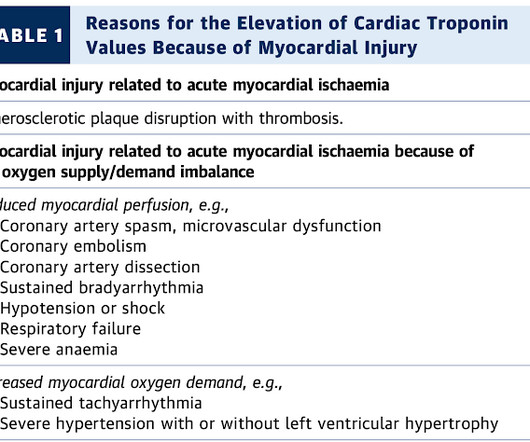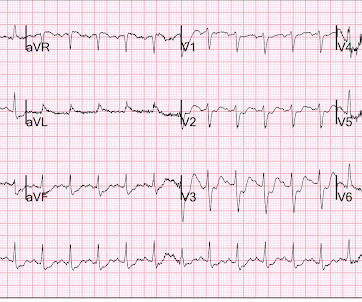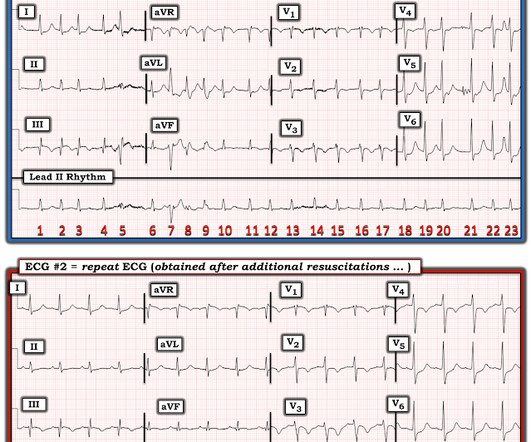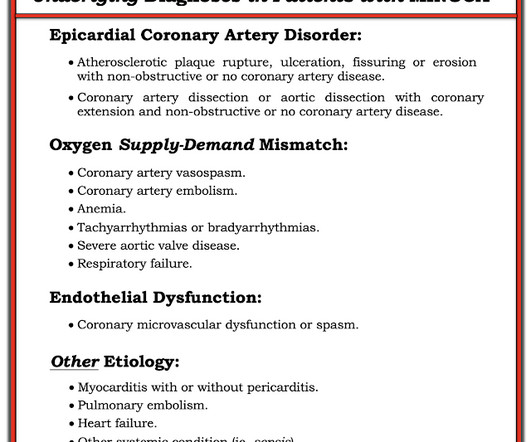1 hour of CPR, then ECMO circulation, then successful defibrillation.
Dr. Smith's ECG Blog
MAY 19, 2020
She was unable to be defibrillated but was cannulated and placed on ECMO in our Emergency Department (ECLS - extracorporeal life support). After good ECMO flow was established, she was successfully defibrillated. Here is a case of ECMO defibrillation with near shark fin that was due to proximal LAD occlusion. The K was normal.











Let's personalize your content